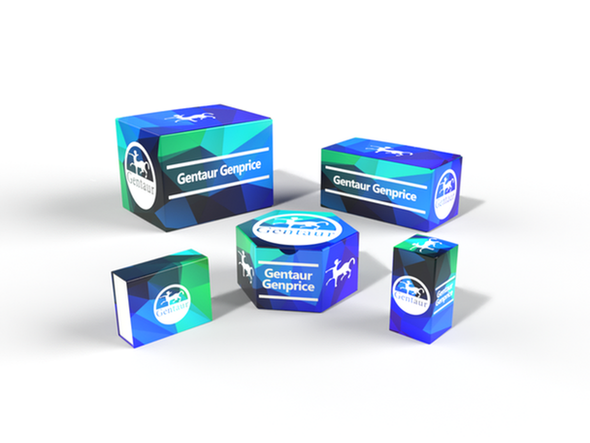LBD
K0776 Antibody (Center) [APR06183G]
- SKU:
- LBD-APR06183G
- Availability:
- Usually ships in 5 working days
Description
K0776 Antibody (Center) [APR06183G] | Gentaur UK, US & Europe Distribution
Product Category: Polyclonal Antibodies
Host: Rabbit
Species Reactivity: H
Specificity: This K0776 antibody is generated from rabbits immunized with a KLH conjugated synthetic peptide between 426-455 amino acids from the Central region of human K0776.
Cellular Localisation: Endoplasmic reticulum membrane. Cytoplasm, cytosol Nucleus. Chromosome. Note=Recruited to double-strand breaks by the MRE11-RAD50-NBN (MRN) complex following DNA damage
Molecular Weight: 89595
Clone: Polyclonal
Gene Name: UFL1 (HGNC:23039)
Gene ID: 23376
Function: E3 protein ligase that mediates ufmylation, the covalent attachment of the ubiquitin-like modifier UFM1 to lysine residues on target proteins, and which plays a key role in reticulophagy (also called ER-phagy) induced in response to endoplasmic reticulum stress (PubMed:20018847, PubMed:20164180, PubMed:20228063, PubMed:25219498, PubMed:32160526) . In response to endoplasmic reticulum stress, recruited to the endoplasmic reticulum membrane by DDRGK1, and mediates ufmylation of proteins such as RPN1 and RPL26/uL24, thereby promoting reticulophagy of endoplasmic reticulum sheets (PubMed:32160526) . Ufmylation-dependent reticulophagy inhibits the unfolded protein response (UPR) via ERN1/IRE1-alpha (PubMed:23152784, PubMed:32160526) . Ufmylation in response to endoplasmic reticulum stress is essential for processes such as hematopoiesis, blood vessel morphogenesis or inflammatory response (PubMed:32050156) . Regulates inflammation in response to endoplasmic reticulum stress by promoting reticulophagy, leading to inhibit the activity of the NF-kappa-B transcription factor (By similarity) . Mediates ufmylation of DDRGK1 and CDK5RAP3; the role of these modifications is however unclear: as both DDRGK1 and CDK5RAP3 act as substrate adapters for ufmylation, it is uncertain whether ufmylation of these proteins is a collateral effect or is required for ufmylation (PubMed:20531390, PubMed:20018847) . Catalyzes ufmylation of various subunits of the ribosomal complex or associated components, such as RPS3/uS3, RPS20/uS10, RPL10/uL16, RPL26/uL24 and EIF6 (By similarity) . Anchors CDK5RAP3 in the cytoplasm, preventing its translocation to the nucleus which allows expression of the CCND1 cyclin and progression of cells through the G1/S transition (PubMed:20531390) . Also involved in the response to DNA damage: recruited to double-strand break sites following DNA damage and mediates monoufmylation of histone H4 (PubMed:30886146) . Catalyzes ufmylation of TRIP4, thereby playing a role in nuclear receptor- mediated transcription (PubMed:25219498) . Required for hematopoietic stem cell function and hematopoiesis (By similarity) . Required for cardiac homeostasis (By similarity) .
Summary: Tissue Location: Ubiquitously expressed, with a high expression in liver (at protein level) (PubMed:20018847) . Low expression in several invasive hepatocellular carcinomas, such Hep-G2, Hep 3B2.1-7, HLE and PLC (PubMed:20018847) .
Form: Purified polyclonal antibody supplied in PBS with 0.09% (W/V) sodium azide. This antibody is purified through a protein A column, followed by peptide affinity purification.
Storage: Maintain refrigerated at 2-8°C for up to 2 weeks. For long term storage store at -20°C in small aliquots to prevent freeze-thaw cycles.
Application: WB
Dilution: WB--1:1000
Synonyms: E3 UFM1-protein ligase 1, 632-, LZAP-binding protein, UFL1, KIAA0776, NLBP

![K0776 Antibody (Center) [APR06183G] K0776 Antibody (Center) [APR06183G]](https://cdn11.bigcommerce.com/s-1rdwiq712m/images/stencil/608x608/products/59817/60121/gentaur-genprice__26005.1661610467__29809.1661628092__75433.1661676199__77988.1661684280__64362.1661692443__29793.1661862496.png?c=1)
![KCTD9 Antibody (Center) [AMM06183G] KCTD9 Antibody (Center) [AMM06183G]](https://cdn11.bigcommerce.com/s-1rdwiq712m/images/stencil/590x590/products/56676/56980/gentaur-genprice__26005.1661610467__29809.1661628092__75433.1661676199__77988.1661684280__64362.1661692443__95664.1661853368.png?c=1)



